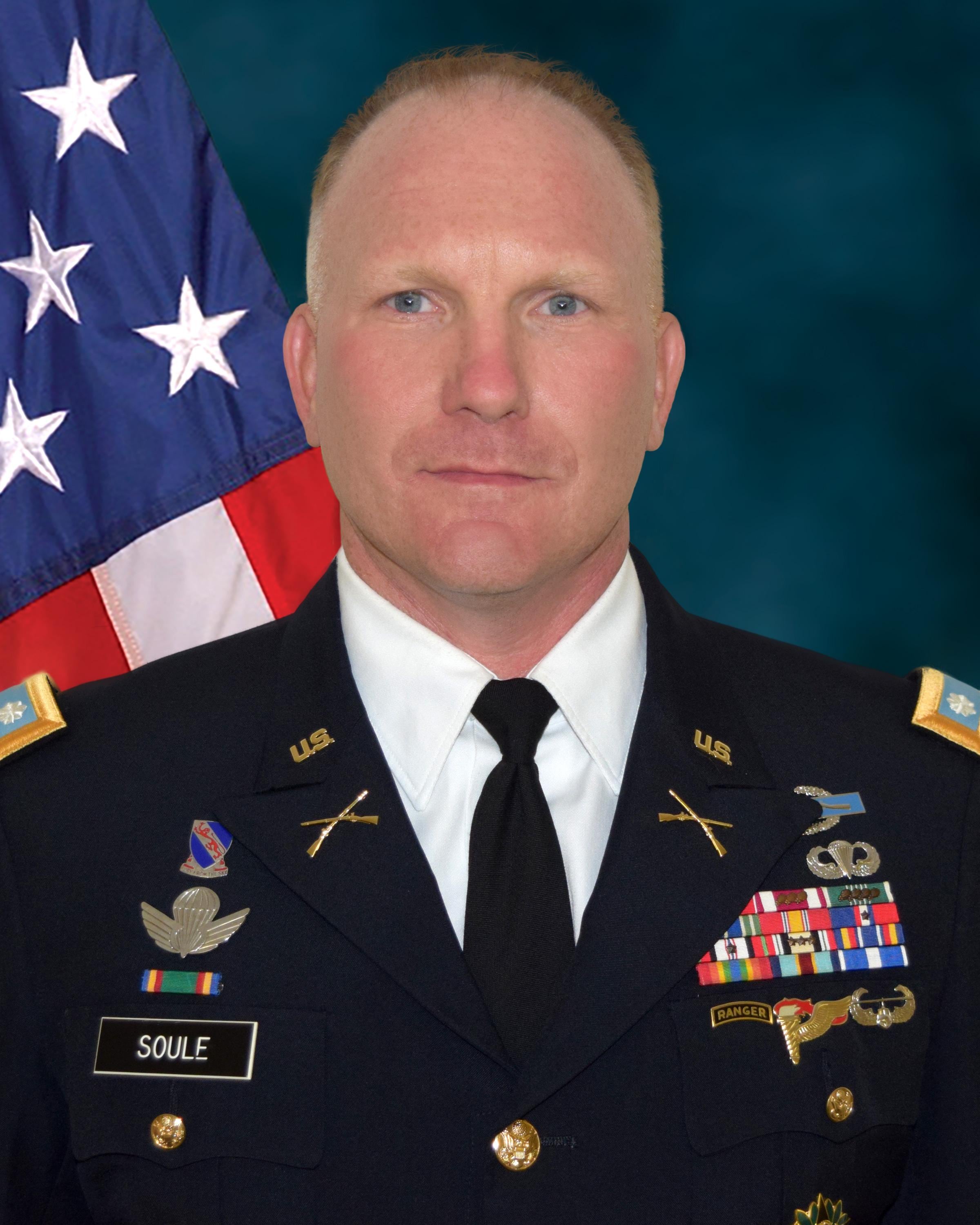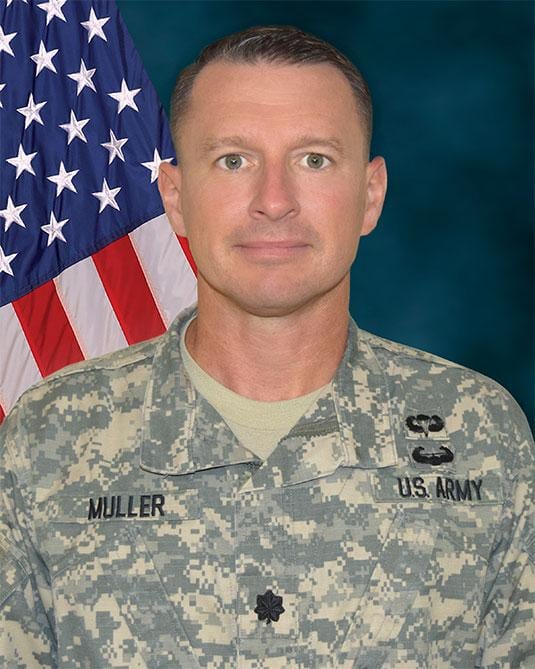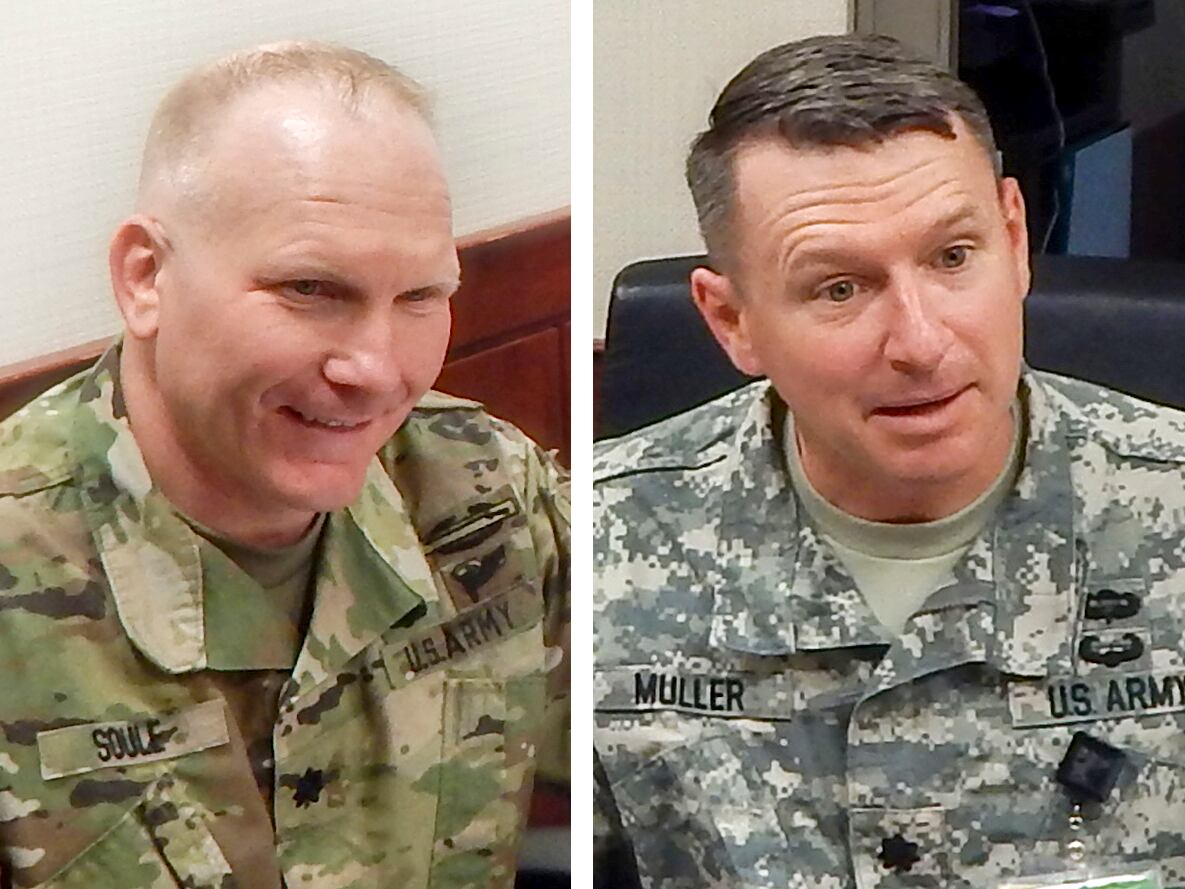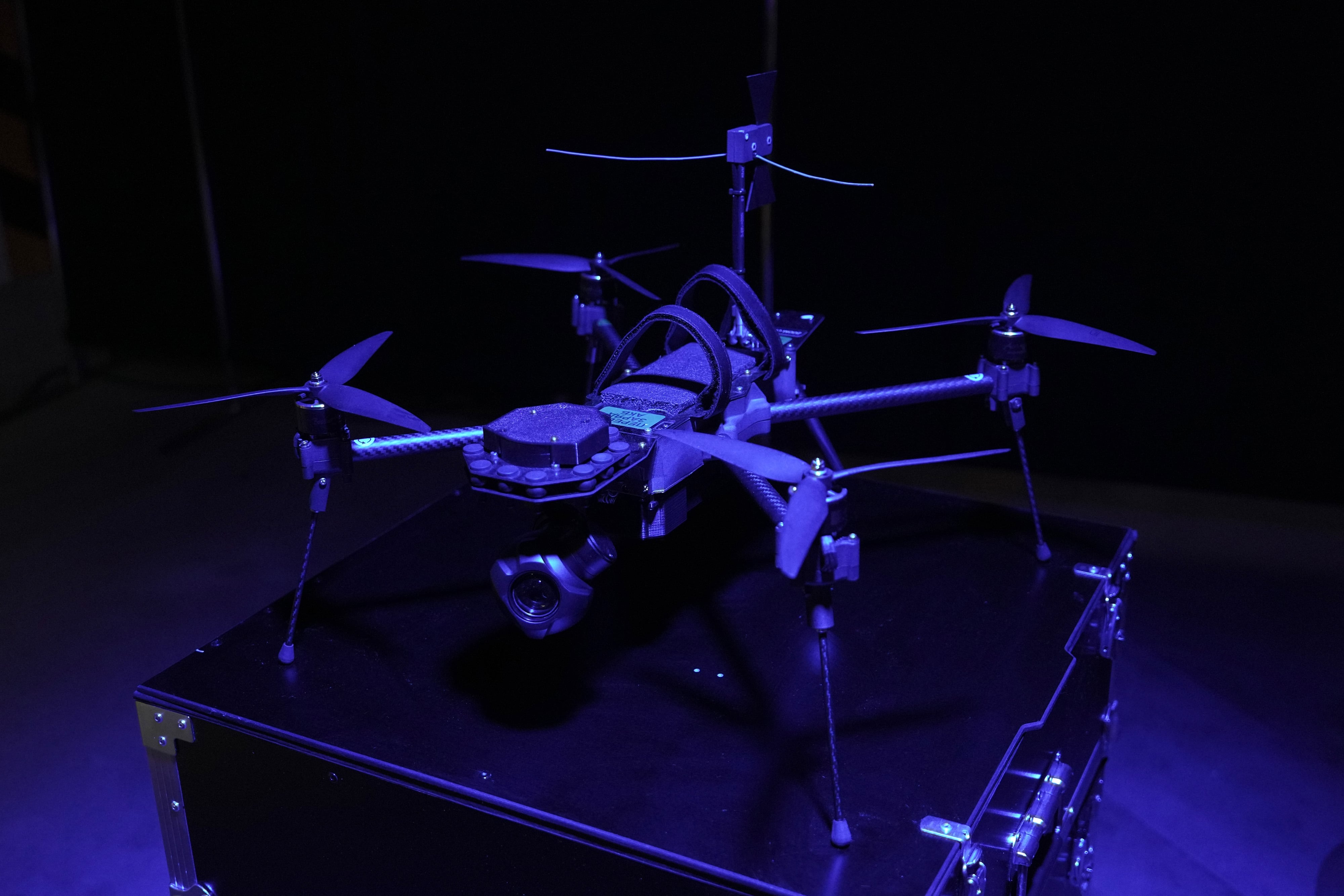Network modernization isn't just happening at the home stations and bases in the United States: It's a global effort that's part of broad, Defense Department-wide plans to move the military toward a centralized, enterprise IT system of networks and all the pieces that comprise them. In the Army, updating aging servers, switches, nodes, wires and other parts is a multi-year project that spans countries, program offices and stakeholders.
Two of the Army Program Executive Office Enterprise Information Systems' key officials charged with helping to lead network modernization at facilities around the world are Lt. Col. Greg Soule, product manager at Power Projection Enablers, and Lt. Col. Gus Muller, product lead for the Infrastructure Information Infrastructure Modernization Program. Both arrived last summer with changes of charter to their programs, and they're working together to make network modernization happen on time and on track.
Soule is charged with handling operations outside the continental U.S. (OCONUS), while Muller oversees stateside or CONUS activities. But the two coordinate regularly to measure progress, ensure their efforts are in sync and share lessons learned.
C4ISR & Networks Senior Reporter Amber Corrin recently interviewed both colonels to get an idea of their missions. The scope, they admit, is so big it can be tough for many to wrap their minds around.
OK, so give us an idea of the work the two of you do and how you work together.
LT. COL. GREG SOULE: In a nutshell, we deliver the networking and modernization services to give soldiers access to the right information, at the right time to be able to obtain information dominance and positively affect the operations that they are doing on a daily basis — be that during a continuous environment or not.
We are about to embark on that for OCONUS. Basically, the dividing line between Gus and I is the continental United States. He has inside; I have outside. Beyond that we do roughly the same job, different focus — being that [network modernization, or NETMOD] was more focused in CONUS initially because that's where the preponderance of our bases are, the big density when you look at population size. Decisions were made to do OCONUS afterward, so we're about to embark on that starting next year where we'll do a NETMOD OCONUS.

Lt. Col. Greg Soule is the product manager for Power Projection Enablers.
Photo Credit: Army
So when you ask where the lines converge, obviously it would make sense that I'm not starting from scratch. I've come talk to Gus and his folks and figured out what do they do with NETMOD CONUS (NETMOD-C), and what makes sense for us to transition to OCONUS. Certainly they're different environments, so not everything's going to transition over, but it makes sense to use that as a starting point, and we did that, and we're continuing to do that: figure out what we want to replicate from his team, and use their set of energies to make sure that our folks are more well-prepared moving into that same big effort. Because it is a really big effort.
Lt. Col. Muller, tell me about some things you've been working on in your CONUS activities.
LT. COL. GUS MULLER: One is a project called ICAN Modernization. It's Installation Campus Area Network for each base, post, camp and station within the U.S., and we count more than 70 CONUS installations that we touch. We're responsible for the inside plant, outside plant and facilities work, voice and data infrastructure improvements. The other task that we take on is specific voice-over-IP projects on a case-by-case basis.
The other is our NETMOD-C, and that is our network-flattening, network standardization based on that architecture document that we call ICAN-DI…DI stands for design and implement. So this overarching document gives us the ability for us to do bases in increments. Add the design plan, then implementation plan. It also gives a standardized architecture for all of our bases, posts, camps and stations. NETMOD-C leverages that and it's been very, very helpful to do several things for our IT infrastructure for the U.S. Army.

Lt. Col. Gus Muller is the product lead for the Infrastructure Information Infrastructure Modernization Program for the Army.
Photo Credit: Army photos
So there's a lot of interaction between our two organizations. In fact it's getting closer because as we see that as we collapse the network, as we're looking at opportunities to install voice-over-IP capabilities, not only are we interacting on a technical level between our technical staffs, we're capturing programmatic lessons learned and best practices that are going to be helpful for both organizations over time.
You can't talk about Army network modernization without mentioning the ongoing implementation of the Joint Regional Security Stacks. Where does that effort figure in with what you're doing?
MULLER: I can speak to our CONUS efforts. One of the things that NETMOD-C has been very effective in doing is we've done this network station at over 25, maybe 30 installations within the continental U.S. Before the campus-area network, before the base actually would be migrated to JRSS, we do the NETMOD-C upgrade. The NETMOD-C upgrades allow us to then take full advantage of the JRSS capability once that is turned on on a region-by-region basis.
SOULE: It's a concerted effort between the Army and DISA. The intent is to get the ICAN modernized prior to JRSS coming in, so that the folks on that base or the folks who are behind that security wall of the JRSS can realize the full benefits of it…it has a great capability to increase bandwidth and security. If you don't modernize the ICAN first, you're not going to realize the full capability. It'll be like you're driving on the German Autobahn, but you've still got your old hooptie from your high school days. We want to get those bases into those Porsches and Lamborghinis first by doing the ICAN modernization, so that they can drive those high speeds on the Autobahn.
It didn't quite happen that way everywhere OCONUS because the ICAN modernization effort and the money for that was mostly focused in CONUS first; however, there were still some JRSS efforts that happened along the way. For instance, in Europe we've done some limited modernization efforts for the ICAN, but their JRSS has already been stood up. We have a big effort starting next year to do ICAN modernization in the Pacific to align with the JRSS migrations that are happening toward the end of 2017.
In Southwest Asia, I'm currently finishing up ICAN modernization efforts on several bases in Kuwait and elsewhere in Southwest Asia to align with the JRSS migrations that are coming end of 2016 and early 2017.
In Korea specifically you've got a huge project in building out Camp Humphries in South Korea – about 500 buildings and 20,000 people going in, you said. How do you balance the massive build out and wiring up, just the IT side of getting Camp Humphries ready, alongside the ongoing modernization efforts?
SOULE: It takes a big effort. It takes a team effort. It takes a lot of coordination and collaboration between the C4I folks in the U.S. government, the U.S. Army, Iraq and the Republic of Korea government. There's a C4I working group that has a very daunting task of coordinating and syncing all of those big efforts and moving pieces because it's not just us C4I providers. It's all kinds of different folks who have a dog in the fight there as well. That starts with the vertical construction. It includes the C4I tail to get those IT infrastructure and services installed and operational, but it's also coordinating all the various units that are moving and all the equipment that they have that's got to be brought down and stood up as well.
One thing that really resounded to me on my first trip to Korea when I came into this job was that their motto is "Fight tonight." So they really are in that mindset where I've got to have the right communication avenues in place to be able to deploy tonight if the North Koreans start looking as if they're coming down toward the [Demilitarized Zone], and they want to get a little bit squirrelly. So even when we're doing all of these migrations and new installs, you've got to have those echo systems in place until, at the right time, you can make the cutover because you can't have even a few minutes or an hour of downtime because that might be the time that you get called out to fight tonight.








